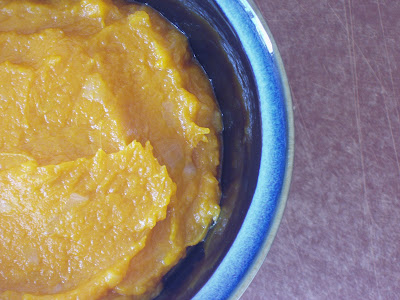The following is a flexible recipe. You can vary the proportions of chickpeas to greens; vary the greens used (silver beet, rainbow chard, beet leaves, spinach and chicory all work well); and adjust the aromatics (onions, leeks, and herbs). You can make it wetter and call it soup; toss it through pasta and call it sauce; or pile it high on grilled bread and call it bruschetta. Or do as we do: serve it on bruschetta – made from a good sourdough brushed with olive oil and grilled – and eat the leftovers as soup for lunch the next day. Feeling like a bit of cheese? Sprinkle it with parmesan. Totally ravenous? Slip a poached egg on top.
However you serve it, this is a complete meal: warm and satisfying. The carrots and red onions make it oh so sweet; and the lemon juice brightens and lightens the flavours. It's so delicious that adults find it hard to stop picking – and, ever so thrillingly, my three young children all like it.
Chickpeas and Silver Beet - 250g dried chickpeas, soaked for a night or two Place the chickpeas into a large pot with the garlic cloves and a drizzle of olive oil. Cover with cold water, bring to the boil, then simmer gently until soft: 45 minutes to 1½ hours, depending on the age of the chickpeas and how long they were soaked. Skim if necessary. Salt, and leave in their liquid until needed. Warm a good swirl of olive oil in a wide skillet. Add the onion, leek and carrot and cook gently for 20 minutes, or until the carrots are tender but not brown. Add the white wine and tomato paste, stir to combine, then simmer until almost completely reduced. Add the silver beet, then clap on the lid and steam until the silver beet wilts, 5 to 10 minutes. Give it a stir every now and then. Add the parsley and the chickpeas, along with half a cup of the chickpea cooking liquid, and cook gently for another 10 to 15 minutes to combine the flavours. Add the lemon juice, and serve with a drizzle of extra virgin olive oil to finish. Tumble over bruschetta, toss through pasta, or make it wetter with more chickpea liquor and serve it in a bowl. This is my own combination, developed from recipes in The River Cafe Cookbook by Rose Gray and Ruth Rogers, and The Savory Way by Deborah Madison. Photograph shows a version with beet leaves and curly kale. (Local: silver beet, carrots, red onions, leeks, garlic, white wine, parsley, lemons, olive oil. Victoria: chickpeas. Origin unknown: tomato paste.) |

















